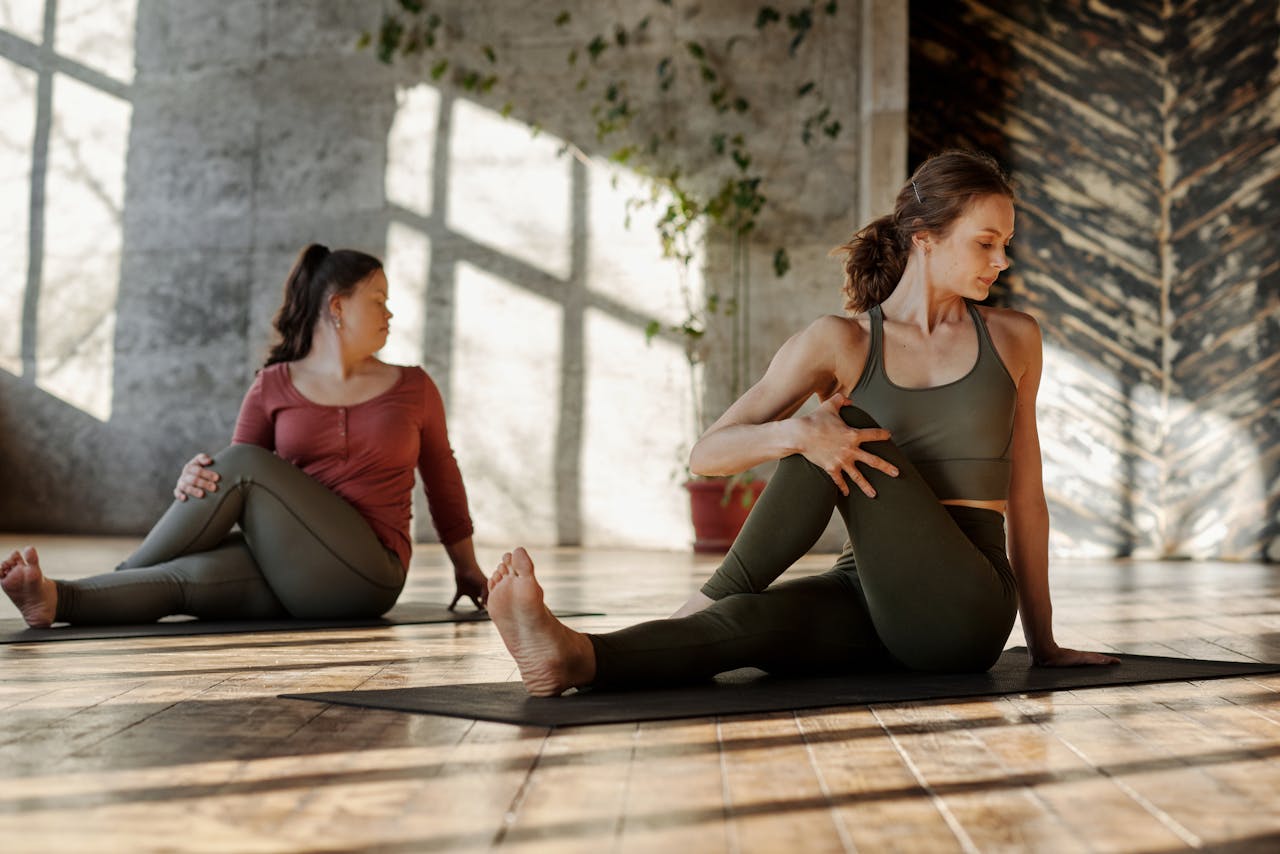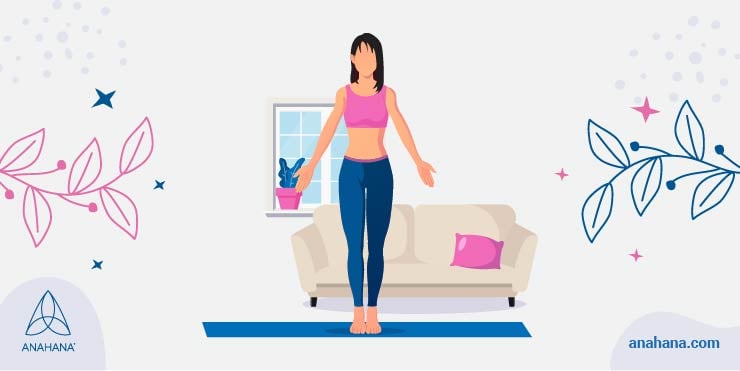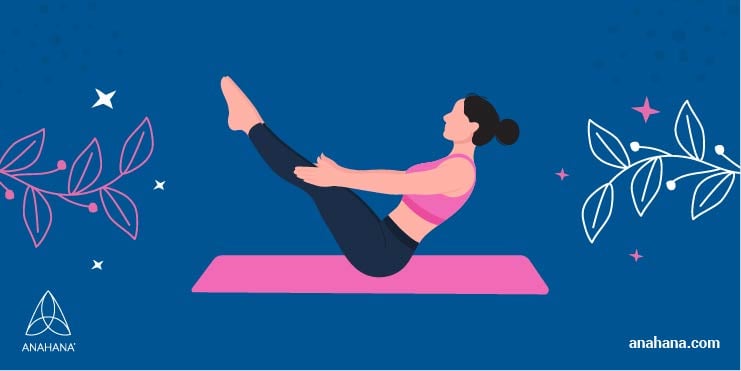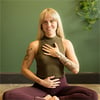
Table of Contents
Dive into the transformative world of Ashtanga yoga poses, a dynamic and structured practice that enhances strength, flexibility, and mental clarity. Discover this powerful yoga tradition's key postures and sequences, and learn how to incorporate them into your practice for holistic well-being.
Ashtanga Yoga Poses
The Ashtanga yoga practice consists of a sequence of yoga movements that depend on the breath-synchronized movements.
The Ashtanga yoga practice is a set of six different series of yoga poses. The first series, or Ashtanga Yoga Primary series, is the most commonly practiced series of yoga poses.
One of the advantages of this yoga style is that it provides a set methodology for performing each movement, making it easy to follow for yoga practitioners.
Like any yoga practice, it is a sequence of moves a practitioner follows one movement after the other until reaching the closing poses. Variations and modifications are available for most of the asanas.
While yoga can be considered a spiritual practice, one of the benefits of Ashtanga yoga therapy is its effect on the physical body. This practice can improve body awareness, strength, and flexibility by focusing on a fixed point of gaze, breathing, and smoothly connecting poses with movement.
Features of the Ashtanga Yoga Practice
Movements
When doing asymmetrical poses, a movement begins on the right side of the body. The movements between poses, called vinyasa, are as important as the poses.
Bandhas, while not always taught, can be applied to anchor muscles for greater ease while doing poses and moving between them.
Breathing
When practicing, one should hold each pose for five breaths.
A breathing method called Ujjayi breathing, or Ujjayi Pranayama, is used throughout. It involves breathing through the nose while constricting the throat to provide resistance for the breathing muscles.
It creates a constant deep hissing sound while breathing. Breathing and movements between poses are synchronized.
Drishti
Drishti, a Sanskrit term in Ashtanga Yoga, refers to the focal point or gaze that practitioners use to direct their attention during the practice.
It plays a crucial role in enhancing concentration, alignment, and the overall meditative experience of the practice. It helps practitioners keep the eyes open during the practice, except when blinking and during the corpse pose.
Each yoga pose in the Ashtanga sequence has a specific drishti, which helps in creating a deeper mind-body connection.
By fixing the gaze on these points, practitioners learn to control their wandering thoughts, cultivate mindfulness, and develop a profound sense of presence on their mats.
Overview of the Primary Series of Ashtanga Yoga
Ashtanga yoga involves a series of postures, beginning with Surya Namaskar A and B. These sun salutes can be repeated three to five times for the warm-up. Surya Namaskar A has ten movements, while Surya Namaskar B has 16.
Following Surya Namaskar are 18 poses that make up the Ashtanga standing series. While there isn’t a strict correspondence, the standing poses correlate roughly to the following seated yoga poses.
The seated Ashtanga yoga postures can be divided into two sections. These poses focus on forward bends and twists, but vinyasas performed can be more arduous than those while standing. The vinyasas involve a subset of poses.
They go from the Surya Namaskar, jumping back to Chaturanga Dandasana - four-limbed staff pose - followed by Adho Urdhva Mukha Svanasana, the upward-facing dog, and Adho Mukha Svanasana, the downward-facing dog, followed by jumping through to sitting again.
At the end of the Ashtanga yoga series practice, finishing poses - closing postures - are done. These include the wheel pose, plow pose, shoulder stand, ear pressure pose and headstand, and the final pose of Shavasana. Closing postures calm the mind and return the body to a balanced state.
The Sequence of Ashtanga Yoga Poses
Tadasana

The starting pose for an Ashtanga yoga practice is the Mountain pose, Tadasana. It is also referred to as Samasthiti or equal standing. It can be done with arms on the sides or hands touching in front of the heart in a prayer position.
When doing the standing series of Ashtanga yoga poses, one returns to Tadasana between the various sets of standing poses.
Sun Salutation A and B
As mentioned, an Ashtanga yoga pose practice always starts with three to five repetitions of Surya Namaskar A, followed by three to five repetitions of Surya Namaskar B.
These sun salutations focus on breath-linked movements or Vinyasa. Rather than holding a pose, move from one pose to the other with an inhale or an exhale. The exception is Adho Mukha Svanasana, a downward-facing dog held for five breaths.
When learning Surya Namaskar A and Surya Namaskar B, one approach to memorizing them is to break down each sun salutation into smaller mini-sun salutations.
Standing Yoga Poses of the Ashtanga Practice
Once sun salutations are completed and end in Tadasana, the standing forward bends of the Ashtanga yoga poses are to follow.
- Padangusthasana and Padahastasana: For both of these standing forward bends, feet are placed hip-width with the legs straight. For the first pose, Padangusthasana, or big toe pose, bends forwards and grabs the big toes with the first two fingers of each hand. For the second standing forward bend, Padahastasana, place the hands beneath the feet so the toes butt up against the wrists.
- Parivrtta Trikonasana: For the Revolving triangle pose, the hips face the same direction as the front foot. Bend forward and place the hand on the same side of the back foot to the outside of the front foot. Twist the body to the side of the front foot with the hand on the same side of the back foot reaching straight up.
- Parivrtta Parsvakonasana: Bend the right knee and bend forward while twisting to the right and reaching the left arm to the outside of the right thigh behind the knee. Put the left hand on the floor to the outside of the foot. With the torso twisted to the right, reach the right hand past the head to form a line with the left leg.
- Prasarita Padottanasana A, B, C and D: Prasarita Padottanasana is a wide-legged standing forward bend. The legs are straight in this set of four poses, repeated four times with a different hand variation. Return to the upright position between each position, but not to Tadasana.
- Parsvottanasana: This pose is commonly called the reverse prayer pose because the hands are positioned behind the back in a prayer position, with palms facing each other and the fingers pointing up.
- Utkatasana: The next pose is called Utkatasana, or a powerful pose. This knees-bent pose, also known as the chair pose, resembles sitting on a chair. This pose is the first and last pose used in Sun Salutation B.
- Virabhadrasana I: From the downward dog, step the right foot forward between both hands. Bend the knee and position the foot so the front shin is nearly vertical. Turn the left leg out so both feet are flat on the ground. Lift the torso and reach both hands over the head, touching the palms and keeping the elbows straight. Hold for five breaths, and then for the left side, turn to the back of the mat for the left side.
- Virabhadrasana II: This pose is the one exception to doing the right side first. For Virabhadrasana II, step the feet slightly wider from the left side of Warrior 1, turning the hips to face the side. Reach the arms out to either side and look over the left hand.
Ashtanga Yoga Seated Poses
After sun salutations and the series of Ashtanga standing yoga poses, the practice of the primary series moves to the ground for a series of seated poses. A natural breakpoint for the seated poses is Navasana, or boat pose.
Where the seated poses before Navasana tend to be variations of seated forward bends, the poses following could be classed as a mixture of yoga poses that stretch and strengthen the hips, shoulders, and spine.
Most of the seated poses involve some element of binding feet and hands. If binding cannot be done in any of the poses, an option is to exert opposing muscles against each other to get a similar strengthening effect.
Another option is to use a strap, towel, or other body parts to help extend the reach.
An Overview of Ashtanga Seated Poses up to Navasana

Leading up to Navasana, the series of Ashtanga seated yoga poses includes:
- Dandasana: sitting upright with legs straight out in front.
- Paschimotansana:
- first, grab the big toes,
- then hands to the soles of the feet (as in Padahasasana),
- then grab the sides of the feet,
- then clasp a wrist beyond the feet.
- Purvottanasana: lift the body with legs straight and place hands on the floor.
- Ardha Baddha Padma Paschimottanasana, or bound half lotus pose seated forward bend: for the first side, bend forward with the right foot in lotus and right hand grabbing the right big toe from behind the back.
- Triang Eka Pada Paschimottanasana: for the first side, bend forward with the right shin folded to the outside of the thigh in the half-hero pose.
- Janu Sirsasana A, B, C: for the first side of each variation, bend forward with:
- A - The right knee is bent on the floor with the foot to the left inner thigh
- B - The right knee is bent with the buttocks positioned over the right heel
- C - The right knee is bent with the foot turned down so that the heel is directly over the forefoot.
- Marichyasana A, B, C, and D: for the first side, the right knee is bent upwards with the foot on the floor.
- The first and second variations are forward bends, while the third and fourth are twists.
- For the first and third variations, the left leg is straight, while the left leg is in lotus for the second and fourth.
- Navasana: balance on the buttocks with the torso angled back and straight legs angled forward and up. Repeat five times, lifting up after each.
The Closing Sequence
The poses following Urdhva Danurasana have often been termed the finishing or closing series when doing the primary series of Ashtanga yoga.
- Salamba Sarvangasana: keep weight on shoulders and elbows, with chin to chest, torso, and straight legs reaching vertically up.
- Halasana: keep weight on shoulders with chin to chest, hands clasped behind back, torso vertical, toes touching the floor behind the head with knees straight.
- Karnapidasana: keep weight on shoulders with hands clasped behind back. Knees are bent with shins on the floor with knees beside the ears and pressing inwards.
- Urdhva Padmasana: keep weight on shoulders with torso vertical and legs in lotus with hands pressing up against the knees.
- Pindasana: keep weight on shoulders with torso vertical, legs in lotus and with arms hugging legs to chest.
- Matsyasana: legs are in lotus position while lying back with back arched off of the floor and top of the head on the floor. Hands grab the feet.
- Uttana Padasana: keep the back arched off of the floor with the crown on the floor. Legs are lifted off of the floor with knees straight. Arms and legs reach forwards and upwards.
- Sirsasana A, B: Headstand with hands clasped behind the head and forearms and head on the floor.
- First variation: legs straight and vertical
- Second variation: legs straight and bent at the hips so that legs are horizontal.
- Balasana: bend forward while kneeling with forehead on the floor.
- Baddha Padmasana: sit with legs in lotus and bound with both hands behind the back.
- Tolasana: lift the body up with legs in lotus.
- Padmasana: sit with both legs in lotus.
- Shavasana: lay on back with arms slightly to the side, elbows and knees straight, eyes closed.
References
Ashtanga Yoga Poses: A Beginner’s Guide to the Primary Series
Ashtanga Yoga Poses: The Ultimate Guide To The Primary Series Of Ashtanga - The Yoga Nomads
Ashtanga Yoga for Psychological Well-being: Initial Effectiveness Study | Mindfulness
Disclaimer
The contents of this article are provided for informational purposes only and are not intended to substitute for professional medical advice, diagnosis, or treatment. It is always recommended to consult with a qualified healthcare provider before making any health-related changes or if you have any questions or concerns about your health. Anahana is not liable for any errors, omissions, or consequences that may occur from using the information provided

By: Meriah McCauley
Meriah McCauley is a leading voice in holistic healing, known across North America for her expertise in chakra balancing, spiritual alignment, and energy-based wellness. Her work bridges the art and science of mind-body healing, shaped through years of study, practice, and mentorship. Meriah deepened her understanding of spiritual anatomy and the chakra system under the guidance of her guru, Dr. Don Stapleton, during her immersive training in Costa Rica. She later earned her Master’s degree in Psychology from Columbia University, specializing in Spirituality and the Mind–Body connection, which continues to influence her integrative approach. Today, she supports individuals and practitioners through coaching, yoga teacher trainings, chakra-focused education, and Holotropic Breathwork for personal transformation. Meriah is dedicated to helping others develop emotional clarity, energetic balance, and spiritual resilience—and she remains committed to guiding anyone seeking a deeper, more meaningful connection with themselves.